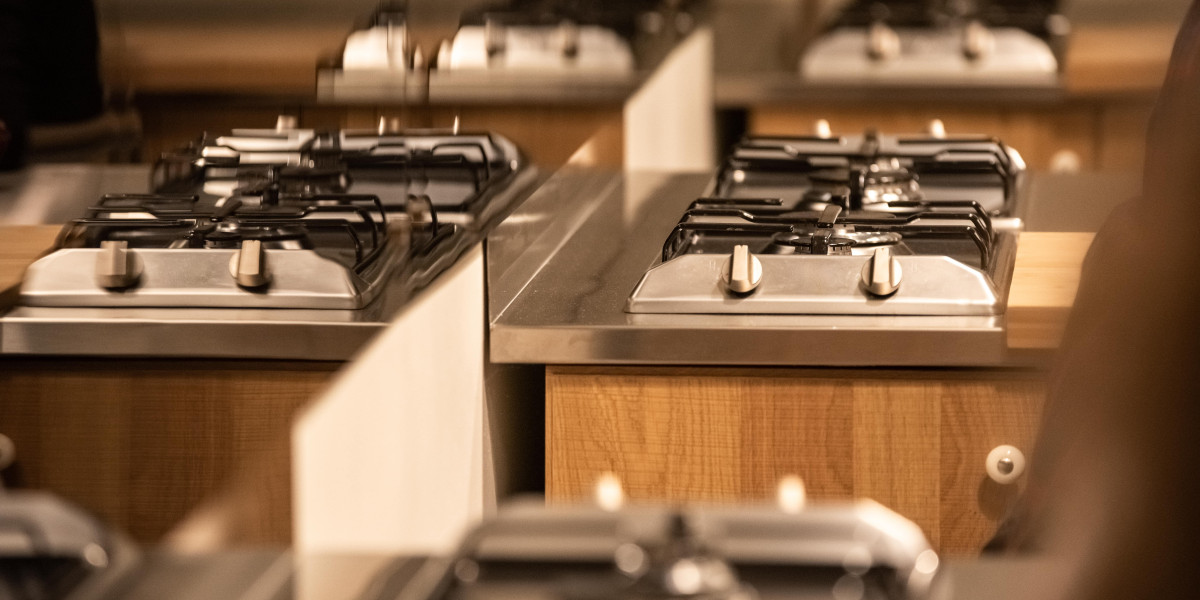The Rise of Built-In Cookers: A Comprehensive Guide
Recently, built-in cookers have acquired significant popularity among house owners and cooking enthusiasts alike. These appliances perfectly integrate into kitchen styles, offering a mix of performance and visual appeals. As development continues to progress within the kitchen device sector, built-in cookers have changed from mere benefits into important tools for modern-day cooking. This article dives into numerous elements of built-in cookers, including their types, advantages, setup considerations, and maintenance suggestions.
What are Built-In Cookers?
Built-in cookers are kitchen appliances intentionally designed to be integrated into cabinets or countertops. Unlike freestanding systems that inhabit standalone area, built-in cookers improve the kitchen's overall design by offering a smooth appearance. They are typically part of a collaborated set that may include ovens, microwaves, and stovetops.
Types of Built-In Cookers
Built-in cookers been available in various types, each accommodating particular cooking designs and preferences. The following table lays out common types of built-in cookers:
| Type | Description | Benefits |
|---|---|---|
| Built-In Ovens | Wall-mounted or integrated ovens that conserve flooring space. | Save area; easy access; aesthetic appeal. |
| Built-In Cooktops | Stovetop systems installed directly into the counter top. | Versatile design alternatives; available in gas, electric, or induction. |
| Microwaves | Built-in microwaves integrate into cabinetry for a streamlined look. | Saves counter top area; modern design. |
| Combination Ovens | Ovens that combine traditional and microwave cooking features. | Adaptability; quicker cooking times. |
| Steam intergrated ovens | Usage steam for cooking, protecting nutrients and flavors. | Healthier cooking; ideal for vegetables and fish. |
Advantages of Built-In Cookers
Buying built-in cookers uses numerous advantages that interest both functionality and style. Below are some of the key advantages:
1. Space Efficiency
Built-in cookers optimize available space, making them ideal for smaller cooking areas. They use a streamlined look without jeopardizing cooking capabilities.
2. Style Integration
These appliances mix flawlessly into kitchen cabinets, improving the general visual. Homeowners have numerous design choices, enabling them to produce a cohesive kitchen appearance.

3. Improved Accessibility
Built-in ovens positioned at eye level remove the need to flex down to inspect food, making cooking a more available experience for everyone, consisting of those with movement obstacles.
4. Versatile Cooking Options
With numerous designs and functionalities, built-in cookers allow diverse cooking techniques. Home cooks can select appliances that best fit their cooking choices.
5. Increased Home Value
Trendy built-in cookers can boost the home's total value, particularly in competitive real estate markets. Purchasers often prefer well-equipped kitchens.
Installation Considerations
While built-in cookers provide lots of advantages, their installation needs careful planning. Here are essential aspects to think about:
- Space Measurement: Before acquiring any built-in intergrated cooker, it's essential to determine the desired area precisely. Appliances require to fit effortlessly within existing kitchen cabinetry, leaving adequate ventilation area.
- Electricity and Gas Supply: For built-in electrical cookers, guarantee that sufficient Cookology 72L Electric Oven - Multifunction & Convenient electrical wiring is readily available. Gas cookers require correct gas line installation.
- Expert Installation: Due to their intricacy, built-in cookers frequently require professional setup. Working with a professional guarantees safety and proper operation.
- Upkeep Access: Consider how the cooker will be accessed for cleansing and maintenance. Availability ought to stay a concern during setup.
- Compatibility with Other Appliances: Ensure that new built-in cookers work with existing kitchen appliances for Ovensandhobs a cohesive style.
Upkeep Tips for Built-In Cookers
Keeping built-in cookers in leading condition enhances their performance and longevity. Here are some maintenance suggestions:
- Routine Cleaning: Regularly tidy the oven and cooktop surfaces to avoid accumulation of grease and grime. Utilize non-abrasive cleaners appropriate for the device material.
- Inspect Connections: Regularly examine gas lines and electrical connections for safety. Right away attend to any indications of wear or damage.
- Replace Filters: Many built-in ovens and microwaves include filters that require replacement. Follow the producer's guidelines for changing these components.
- Calibration: Over time, built-in ovens may need recalibration to make sure accurate temperature level settings. Consult the user handbook for standards on how to recalibrate.
- Professional Service: Schedule expert upkeep checks occasionally to make sure that all components work optimally.
Built-in cookers represent a substantial improvement in kitchen style and performance. Their seamless integration into cabinetry not just enhances the visual appeal of a kitchen however likewise enhances performance and use. By comprehending the numerous kinds of built-in cookers, their advantages, and considerations for installation and upkeep, property owners can make educated choices that elevate their cooking experience.
Often Asked Questions (FAQs)
1. Are built-in cookers more pricey than freestanding models?
While built-in cookers may have a greater preliminary expense, they frequently offer improved installation looks and greater performance, making them a beneficial financial investment for numerous house owners.
2. Can I install a built-in cooker myself?
Though some homeowners select to set up built-in cookers themselves, it is frequently a good idea to hire an expert due to the intricacies included, especially with gas lines and electric circuitry.
3. How do I choose the best built-in cooker for my kitchen?
Consider your cooking routines, kitchen design, and area restrictions when picking built-in cookers. It's also necessary to examine the power source and preferred performances.
4. What is the life-span of a built-in cooker?
With proper maintenance, built-in cookers, particularly ovens, can last several years-- typically varying from 10 to 20 years, depending upon the brand name and usage.
5. Are built-in cookers energy-efficient?
Many modern-day built-in cookers include energy-efficient innovations, such as convection cooking and smart functions, which can help in reducing energy intake.
Built-in cookers offer an advanced solution to modern-day cooking requires while improving the kitchen's overall esthetic. As culinary trends continue to progress, these appliances will likely stay an integral part of kitchen styles for many years to come.








